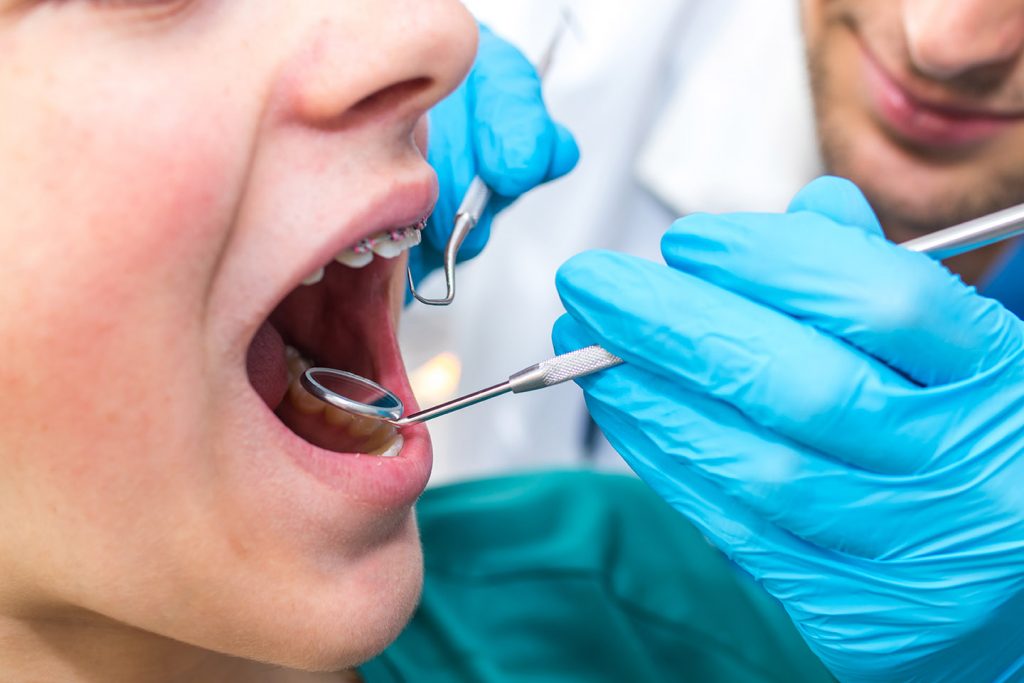
Parents frustrated by seemingly endless NHS waiting lists for orthodontic treatment for children are increasingly turning to private orthodontists to ensure their youngsters get the oral health care they need when it will be most beneficial.
Orthodontic therapy works best before adolescence – while a child’s mouth is still growing and the jaw bones remain pliable before hardening during the late teen years.
However, the way the NHS system works may be preventing thousands of youngsters from getting free orthodontic treatment when they need it most.
An investigation by the Mail on Sunday in 2018 found that at least 20,000 children a year were being denied free braces to fix misaligned teeth.
The problem lies in how NHS Local Commissioning Teams control the contracts necessary for dentists to offer orthodontic services, which has led to insufficient NHS contracted orthodontic treatment to meet demand.
The British Orthodontic Society (BOS) says all children who need orthodontic care should be treated at the “optimum time in their development” – on average at about the age of 12. Ironically, the NHS agrees that the best age to get braces is around 12 or 13, when children typically have a full set of adult teeth but their mouth and jaw are still developing.
According to the NHS, about a third of children need orthodontic treatment to correct teeth and jaw irregularities. These problems include crooked, gapped or overlapping teeth, and malocclusion.
Malocclusion refers to a bad bite, which includes:
Without treatment, bite disorders can result in further oral health problems including cavities and tooth loss, gum disease, erosion of tooth enamel, and difficulties in speaking and/or eating.
Signs your child may need orthodontic therapy include:

NHS orthodontic therapy is free for under-18s with a clear medical need for treatment, but high demand means there can be long waiting lists, particularly in areas where trained NHS orthodontists are thin on the ground.
Even if your youngster qualifies for free orthodontic care, waiting times for treatment can range from six months to two years or more, according to the NHS.
In 2019, the BBC reported how one youngster in Wales had been waiting six years to get NHS braces.
Timely treatment of issues with the development of the teeth or jaw in your child can avoid more serious oral health problems – and far more expensive treatment – in the future. Unfortunately, this may not be possible under the NHS.
Besides long waiting lists, another issue with NHS orthodontic therapy is lack of treatment options for your child.
The only NHS orthodontic therapy is with conventional fixed metal braces. This precludes other more advanced and less conspicuous options such as:
Apart from being practically invisible – made from transparent medical-grade polyurethane resin – Invisalign aligners can be removed for meals and snacks and allow for effective brushing and flossing, which is tricky with the wires and brackets of fixed braces.

The cost of private orthodontic therapy for children varies according to factors such as the complexity of the case and the expertise and experience of the dentist, and treatment with aligners or lingual braces is more expensive.
Some private dental insurance plans provide orthodontic cover for children if the treatment is considered medically necessary, but most will only reimburse a percentage of the costs.
Some private orthodontic specialists strive to make treatment more affordable by offering free consultations and payment plans that allow you to spread the cost of treatment over monthly repayments, often interest-free.
An orthodontic specialist is a dentist who has typically completed at least three years’ further training in the field after dental school. This hospital-based programme involves both hands-on practice and theory.
Only dentists who have successfully completed this extra training or the equivalent can register with the General Dental Council (GDC) as a specialist in orthodontics.
Correcting orthodontic problems makes oral hygiene easier, which helps to prevent tooth decay and gum infection, and can have a huge impact on a child’s smile and self-confidence.
Due to lack of resources, the NHS cannot currently cope effectively with the number of children needing orthodontic care. This has resulted in long waiting lists that may deprive youngsters of orthodontic treatment at the optimum time of oral development.
Private orthodontic therapy provides an alternative for parents concerned about the long-term oral health of their children, and can resolve a wider number of problems with more treatment options.